Royal Oaks CC (Dallas)
- gatexas
- Jun 19, 2017
- 7 min read
Royal Oaks Country Club is laid out along White Rock Creek in Dallas, Texas and measures 7,125 yards from the back tees. The course was initially designed by Billy Martindale, Don January, and J. Press Maxwell in 1969. Since then, the course has had renovations by Jay Morrish (1984), D.A. Weibring and Steve Wolfard (2001), and Chet Williams (2014). Some of the courses biggest changes have come in the past two decades; Weibring and Wolfard added water on hole 11 and some changes to bunkers, and Chet Williams has added water on hole 2, green renovations (all greens were changed from bent grass to bermuda MiniVerde), the addition of 27 bunkers, tree removal, as well as a redesign of the 18th hole's green complex. The course is ranked inside the top 30 on the Dallas Morning News golf course rankings and is among one of the toughest tracks in the state. The golf course tests every part of a players game. The narrow fairways, well guarded greens, and contours can easily separate the good players from the great. The course has also been the site of the Royal Oaks Intercollegiate hosted by Baylor University since 2008.
Hole 1: 436 yards Par 4
The first tee shot sets the tone for the rest of the golf course. A huge premium is places on accuracy but it is critical to miss tee shots on the correct side. This tee shot definitely favors a right to left tee shot with the miss being left. This allows players to avoid being blocked out by trees and better angle into the firm greens. The green itself is guarded by 4 bunkers. The front left bunker will rarely come into play from the left side of the fairway but for players missing it right, the will have to navigate shots (especially punches) around this bunker to avoid the dreaded long bunker shot. On the green players have to deal with a number of exterior contours that place a premium either on proximity on the approach or lag putting. The hole offers players a nice handshake to start the round and a taste of what is to come.
Hole 5: 551 yards Par 5
The fifth hole is the first par 5 on the course and is all about placement. Off the tee, two bunkers are flanked on the outside of the dogleg. The first bunker is roughly 245 yards from the tee and the second is 280 yards from the tee. The ideal shot is a draw around the left side of the dogleg, this opens up the fairway by taking the bunkers out of play and can make the lay up a little easier. Another option is to hit something between the bunkers or short of them all together. This leaves players with a much longer lay up shot but being in the fairway for the second shot is a huge premium. About 90 yards from the green are two bunkers that cut into the fairway. These bunkers are very penal, they are small and relatively deep for their size. If a player stays short of all the bunkers off the tee, they'll have about 220 yards to the next set of bunkers, so for players being aggressive off the tee they are rewarded by being able to take the next set of bunkers out of play. When players lay up, the angle into the green has to be considered. Approaches from the left have the best angle and the most room to work with. Shots from the right have less room to work with and the green will run away from them slightly. The green itself has a nice mix of exterior contours with a variety of pin locations making it one of the most interesting holes on the course.
Hole 6: 428 yards Par 4
The sixth hole can be very deceiving. Off the tee players feel as thought they want to favor the right side (they see the front left green side bunker and assume they don't want to have to carry it from the left). The right side feels open from the tee but a group of trees past where players hit their tee shots will force players to navigate around them. Ideally, players want to tug the left side of the fairway. From there, the approach is all carry. Two false fronts move balls some 15 yards from the putting surface, making distance control a premium. The green has its fair share of difficult and easy(ish) pin placements. A back left pin that is over the bunkers will require a lot of spin to hold the green that runs away from you. Middle pins are guarded well by interior contours and slight ridges.
Hole 9: 393 yards Par 4
The ninth hole is my personal favorite on the golf course. The classic example of the Heroic School of Architecture allows players to choose how much they want to take off the dogleg. The safe play is to stay left and stay short of the bunkers leaving you with around 130 yards to the center of the green and an okay angle into the green. The more aggressive player will have the opportunity to shave some 40 yards off their approach and also have a better angle into the green that favors a cut (However, a poor tee shot that is missed right can end up in a deep bunker, behind a tree, or in the hazard). Even with a short club in their hand, players will still have to control their distance extremely well to hold the green. Two portions of the green run away from the player, giving the player with a wedge more of an advantage. Behind the green is a small bunker that players can't see from the fairway and can sneak up on the aggressive player. The green itself definitely puts a premium on proximity. Long putts have to deal with difficult contouring and slopes.
As players pass go to the tenth tee, they pass by the Champions Plaza. This is where they highlight some of the victories of notable players who play at the club including Don January, Lee Trevino, Justin Leonard, and D.A. Weibring. (Zoom in to look at the plaques)
Hole 11: 434 yards Par 4
The eleventh hole is options and intimidation galore. The bunker in the middle of the fairway (about 280 yards away) instantly grabs a players attention off the tee and forces a choice as to how to avoid it. There is also water right as well as two bunkers left making whatever line you chooses have to be a good shot. Aggressive players are rewarded for going over the bunker, giving them a short iron in. For players who lay up, the right side of the fairway is ideal for most pin placements. The left, while still the safest option, can give players trouble on the approach. The angle is tougher to left pins and water guards the right side completely. The green itself runs away from players on the left and the right side is defended by interior slopes that put a premium on proximity. A 20 foot putt on this green can have multiple breaks and grain changes, testing a players lag putting and green reading ability. This is one of the best hole on the course. If you pull off an aggressive shot, you are rewarded proportionally and for conservative play you're less likely to be in trouble but making par is a little more difficult.
Hole 12: 196 yards Par 3
The twelfth hole on the course is one of the most intimidating holes on the course. From the tee, players are drawn to White Rock Creek that seems to wrap around the green as well as the bunkers that closely guard the green. The front left bunker makes approaches to a front or left pin need to be very accurate. This bunker can give players fits, its size and relative depth can make for difficult shots if a ball is near the lip. A slope on right side of the green can make the hole feel more intimidating. Going long or being too far left can leave players with difficult shots that may be hard to keep on the green.
Hole 14: 563 yards Par 5
The fourteenth hole gives players an intimidating tee shot. A bunker through the fairway is flanked the right side, making a draw off the tee the ideal shot to avoid this bunker. Left however, is a tree and bunker that can give short players the option of laying back our getting aggressive. The second shot is one of the best on the course. The closer a ball is to the right bunker, the better line they have to go for the green with a carry over White Rock Creek. Long tee shots to the left have two tall trees that get in the way of the green. They tempt players to carry them considering their relatively short distance to the green. Players also have the option of laying up down the left of the hole. This shot must go a certain distance in order to not be blocked by a few trees on the right. The green itself is guarded by 5 bunkers. The left green side bunker appears to make the green look like a Lion's Mouth template with two false front on both side of the green. A green side bunker on the right is blind for most shots and missing in this can give players a touchy shot with the green running away from them. The relatively simple green can give players fits if they miss in bad spots. Contours in the closely mown aprons give players a variety of options to tackle tough shots.
Hole 18: 512 yards Par 5
The final hole wraps up the golf course's incredible test of ball striking. The fairway thats just over 20 yards wide is guarded by a huge group of trees on the right and water left. A bunker on the left cuts into the fairway making long tee shots have to deal with a fairway about 17 yards wide. The second shot tempts players to go over the water hazard in front of the green to the apron right of the green. For players going for the green, a bunker behind the green is blind and can leave players with a tricky up and down. The also have to deal with a group of bunkers right of the green. Players can also lay up short, giving them an ideal angle into the green. The green is guarded by green side bunkers and water but none are as hazardous as the apron behind the green. Players who miss here face a shot off of a downhill lie going up to the green about 7 feet up. It gives players an incredibly difficult shot, they can choose to flop on up, bump one into the hill, or roll it up to the green. None of these options are very easy to get down in two compared to the green side bunkers. The final hole gives players a final test of ball striking and scrambling. Proximity to the hole and missing in the right places is key to scoring well at Royal Oaks.













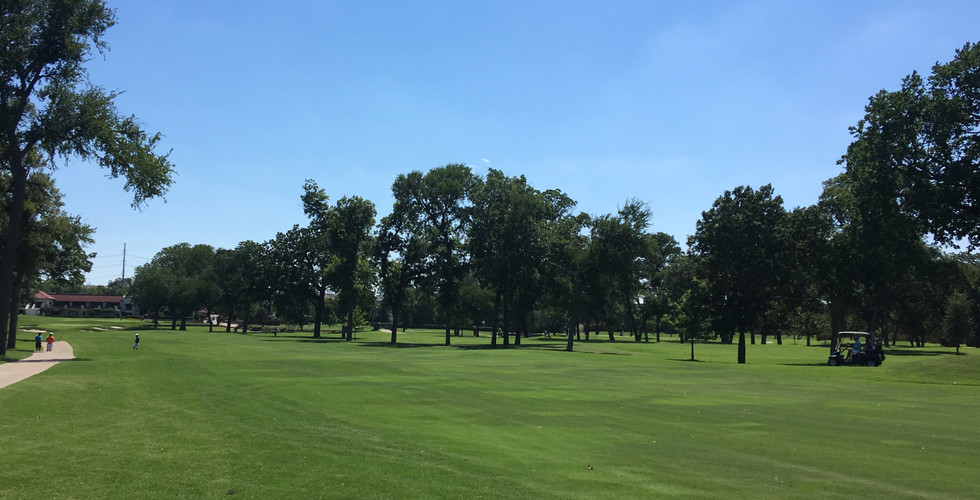




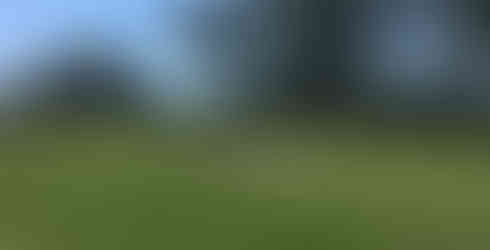











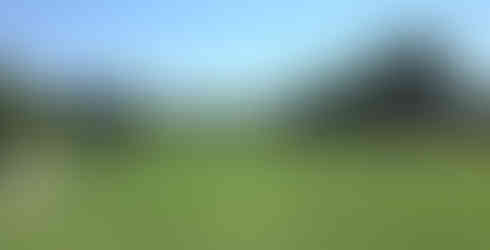















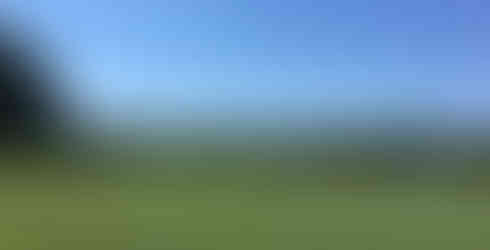

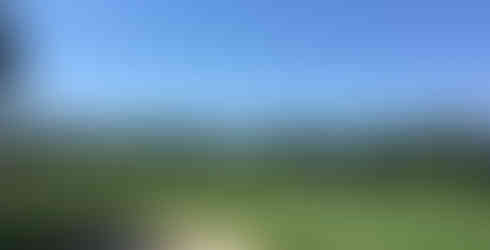





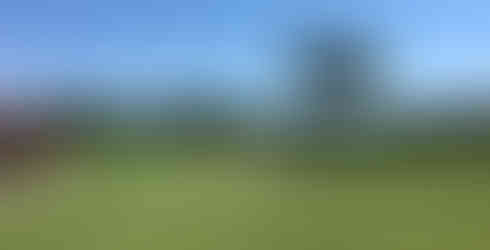




















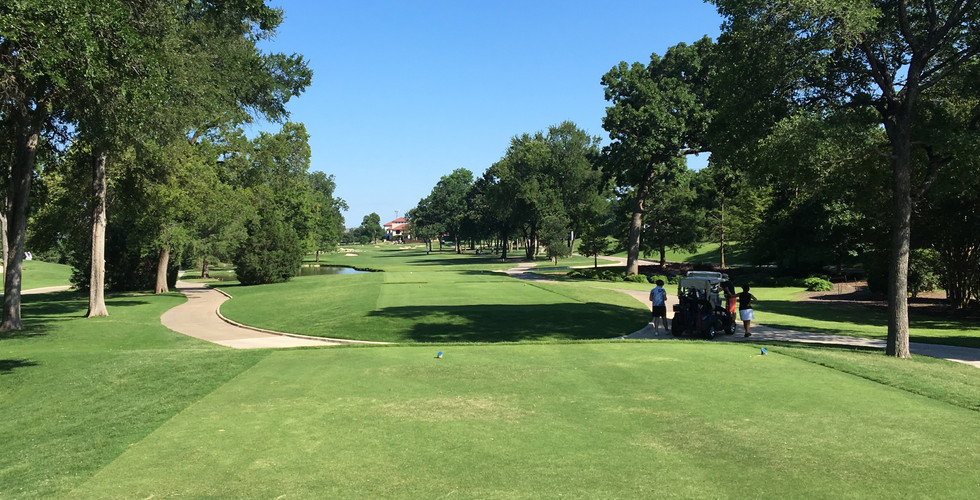



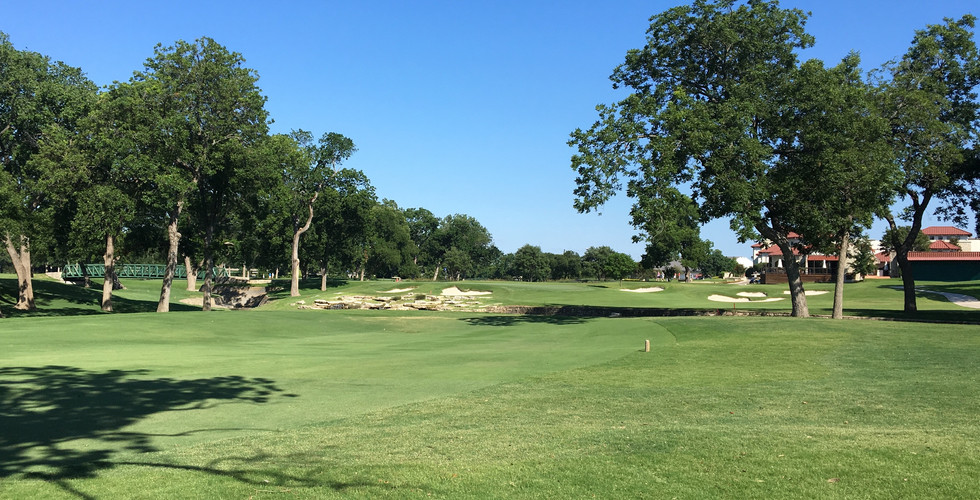








Comments